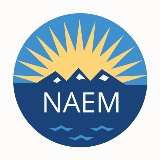Succession Planning Creates Resilient Organizations

"One of my responsibilities as a leader in the organization is to prepare our people to be ready to backfill, to continue, to step in and carry on the momentum," he said.
While most EHS organizations have some type of succession plan in place, it often takes a staff vacancy or a re-organization for it to rise to the top of the list of priorities. No matter how it happens, though, NAEM members say the goal is to create a resilient organization.
For Mr. Harczynski, last year's talent review was his impetus to fully understand his own plan. What he noticed was that there were too many external hires, too many candidates who were new to the company, and too many who were three to five years away from being ready for promotion, he said.
"And I said to myself, 'It isn't a good story because you simply haven't focused on it. You haven't made it a priority for you and your team.'"
To better manage his talent, Mr. Harczynski now meets with his direct reports every three months to review the succession plan for each position within the Aerospace EHS organization. The team discusses how potential succession candidates are performing, and shares the names of those from across the company's four business units who should be considered for the plan.
"I tell everyone that the best way to interview, the best way to position yourself for the next job in your career is to exceed expectations at your current job," he said.
Part of that exceptional performance, Mr. Harczynski says, is demonstrating what the company calls 'leadership impact', an important attribute for potential EHS leaders.
"What kinds of behaviors do you demonstrate to get results? Are you influencing and collaborative, or are you bullying your way through?," he said.
Interpersonal skills are likewise a trait that distinguishes candidates for succession at AMCOL International Corp., where Director of EHS Kelvin Roth says succession planning actually begins at the moment of recruitment.
"We hire based on business need, but during the interview process we look at overall fit with the company and one of that is, 'What leadership skills do they have? What interpersonal skills do they have?'" he said.
Once an employee is hired, the company develops an individual development plan (IDP) that is updated during the mid-year and end-of-the-year reviews.
"It not only reflects their ambitions but also makes sure that they're getting the right skills for their position or their next potential position," Mr. Roth said.
During this bi-annual conversation, employees have the chance to talk about their job satisfaction and interest in pursuing other roles within the company. The outcome ultimately shapes the succession plan.
"I can't assume that just because you're good at something that that's what you want to be doing," Mr. Roth said.
Sometimes that means losing EHS staff to other functions; sometimes it means looking outside of EHS for new talent. Among the nine-person corporate EHS team at AMCOL, five members came from other functions within the company, according to Mr. Roth. Two of his team members had performed well in other roles at the plant-level and were promoted into positions within EHS.
"If we didn't have these discussions we most likely would have lost those two people," he said. "I could have missed the opportunity to find some good talent internally."
Mr. Harczynski also sees the performance review process as an opportunity to both tweak the succession plan as well as identify opportunities for employees to grow.
"If someone sits across the table from me and they're doing well in their current job, I'm going to ask them a minimum of twice a year about what they want to do, what I can do to help them prepare or position them for whatever is next," he said.
And not all growth is vertical, he adds. Preparing candidates for succession may involve providing opportunities for them to develop their skills in other areas.
"Half of my team leads plants," he said. "The other half of my team leads processes. And we've had success moving folks from being a multi-site leader to a process leader and back. That is one of the ways you can keep folks engaged, learning and continuing to grow."
While both Mr. Harczynski and Mr. Roth say that their preference is to promote from within, that's not always possible, particularly when a re-organization creates a new role without a natural successor.
This was the case for Aveda Corp., when Chuck Bennett decided to retire from his position as Vice President of the Earth and Community Care department earlier this year.
His highly specialized role as a technical expert, influencer and communicator helped the company advance its goal of integrating sustainability into all aspects of the business. But it made finding his successor a bit of a challenge.
Before he started at the company six years ago, sustainability initiatives at Aveda were led by an Executive Director of Environmental Sustainability. When the company reorganized the department to better align its activities with the values of the personal care brand, Mr. Bennett was hired to lead the new cross-functional team.
"When I came, we merged the traditional EHS with the other areas and made it a far more holistic, central function," Mr. Bennett recalled.
With his broad background in environmental consulting, corporate EHS and social responsibility, Mr. Bennett said he has been well-suited to his role, which combines EHS with supply chain relationships and external corporate social responsibility communications. It also requires him to collaborate with leaders from throughout the company.
"There's very little in the company that my team is not involved with to some extent or another," he said.
The question of his succession arose two years ago, when he started thinking about his retirement. After talking to internal candidates to gauge interest and fit, the search team turned their sights outward. They sought a leader who had expertise in both environmental and social issues.
"Because they are so integrated in terms of the way that we approach them at Aveda, [we were] looking for someone with a specific set of technical skills and experiences to play that integrative role."
They also sought a candidate who could effectively communicate the company's activities both internally and externally.
"In this role, communication skills—be they written, spoken, relationship-building—are very important," he said. "That was certainly one of the factors that the team was looking for."
In fact, given the increasingly external-facing nature of the EHS function, communication skills have become more important for succession candidates in the profession overall, he says.
"Twenty years ago, particularly in the EHS field, there was so much inward focus that perhaps broad communication skills weren't as important as they are now that companies are becoming more public in how they're positioning themselves around these commitments," he said.
As with any other succession, however, the most important goal was to ensure business continuity. Getting an early start gave the team enough time to plan for an overlap between leaders.
"If you can do that, I think that's probably the most valuable part of a plan for transition."
Even under the best of circumstances, though, succession means change, and that's never easy, Mr. Bennett said.
"Transitions like this are difficult for people," he said. "The benefit of starting early is partially getting the succession plan in place but also the operation of it underway while you're still there so that people can get a feel for what it's going to be like in the next iteration because it's never going to be the same."
Topics:
Leadership & Careers
Related
About the Author

NAEM Staff
The National Association for Environmental, Health and Safety, and Sustainability (EHS&S) Management (NAEM) empowers corporate leaders to advance environmental stewardship, create safe and healthy workplaces and promote global sustainability. As the
leading business community for EHS&S decision-makers, we provide engaging forums, a curated network, peer benchmarking, research insights and tools for solving today’s corporate EHS&S management challenges. Visit us online at naem.org.

